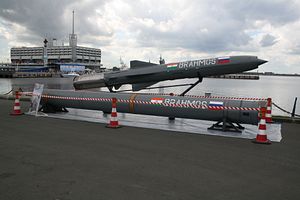On June 22, 2016, the U.S. Army War College’s Strategic Studies Institute released a 60-page monograph analyzing the major trends in India’s nuclear posture and thinking in the increasingly challenging geopolitical environment of the Indo-Pacific region.
India’s Evolving Nuclear Force and its Implications for U.S. Strategy in the Asia-Pacific is the work of three scholars who have written widely on India and Asia security topics: Yogesh Joshi, a PhD candidate at the Jawaharlal Nehru University whose work has appeared in Asia Policy and India Review; Frank O’Donnell, a lecturer in strategic studies at the University of Plymouth at Britannia Royal Naval College; and Harsh V. Pant, a professor of international relations at the India Institute at King’s College, London. Their work is a timely and important reminder that recent events in the East and South China Seas, which dominate the headlines of major news organizations, are only one aspect of a changing strategic environment in the region.
The authors focus on the evolution of India’s nuclear force structure and strategic doctrine in the face of recent nuclear developments in Pakistan and China, and the implications of these developments for regional security. Since 1998, India has adhered to a nuclear doctrine called Credible Minimum Deterrence (CMD) that emphasizes no first use of nuclear weapons and massive or assured retaliation to deter potential nuclear opponents. But recent trends and planned weapon systems in India’s nuclear force structure are leaning in the direction of a war fighting capability and a rethinking of its strategic doctrine.
India is developing a new generation of land-based nuclear missiles with greater range and payload (the Agni V and Agni VI missiles), improving its aircraft-based nuclear capacity, and planning a larger sea-based (including submarine-based) nuclear force—a strategic triad of nuclear capabilities. It is also researching MIRVs (multiple independent reentry vehicles) and improved short-range missiles (Shourya, Prahaar, and Brahmos).
These developments coincide with comparable moves by China and Pakistan, India’s historic and most likely adversaries in the region, including naval nuclear capabilities that portend an increasingly nuclearized Indian Ocean. The authors warn that a regional nuclear arms race is underway without a potentially modifying disarmament dialogue or regime in place.
The authors cite Indian analysts who advocate the need to revise the country’s nuclear doctrine, calling for an end to massive retaliation, more proportionality in force structure and strategic response, and more “ambiguity” about its “no first use” pledge. This debate in India is reminiscent of the debate in the 1950s in the United States, which pitted the Eisenhower administration and its adoption of massive retaliation against its critics who advocated “flexible response” to avoid overreliance on nuclear weapons. Analysts and policymakers in India also sense the need for a closer defense relationship with the United States to provide balance against the Sino-Pakistani defense axis.
There is a concern that India’s force structure, rather than a realistic threat assessment, is driving the rethinking of nuclear doctrine toward a war-fighting scenario instead of pure deterrence. Officially, however, India’s government has proclaimed that there is no shift in the CMD doctrine and no abandonment of “no first use.”
The greatest concern expressed by the authors is that the continuing arms race will lead to misperceptions and/or miscalculations that could result in war, including nuclear war, among India and its longtime regional adversaries. They suggest the creation of a formal trilateral India-Pakistan-China nuclear dialogue with real transparency.
The authors spend surprisingly (given the title of the monograph) less ink on the implications for U.S. strategy in the region. India-U.S. defense ties are growing in response to a mutually appreciated threat from a rising China. That will likely continue. The authors recommend that U.S. political and military strategists engage in contingency planning for regional nuclear crises, including in the Indian Ocean. Perhaps most importantly, U.S. leaders need to encourage and foster a dialogue among the regional powers in an effort to avoid the misperceptions and miscalculations that could lead to catastrophic war.
The full monograph can be downloaded here.
Francis P. Sempa is the author of Geopolitics: From the Cold War to the 21st Century and America’s Global Role: Essays and Reviews on National Security, Geopolitics and War. He has written on historical and foreign policy topics for Orbis, Strategic Review, Joint Force Quarterly, The University Bookman, the Asian Review of Books, the New York Journal of Books, Presidential Studies Quarterly, the Claremont Review of Books, American Diplomacy, The Diplomat, and the Washington Times. He is an attorney, an adjunct professor of political science at Wilkes University, and a contributing editor to American Diplomacy.

































